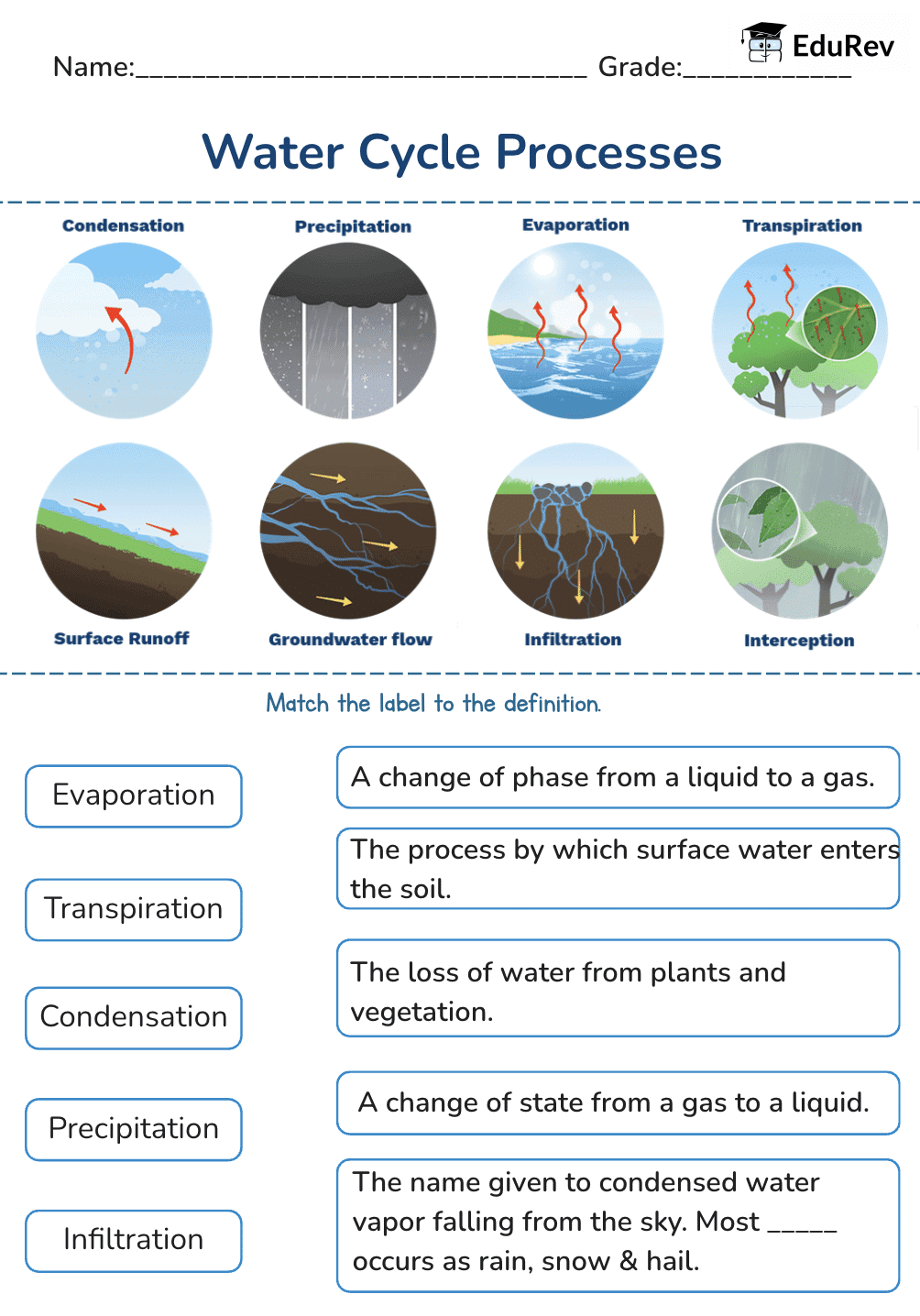CTET & State TET Exam > CTET & State TET Notes > Social Studies & Pedagogy Paper 2 for CTET & TET Exams > Visual Worksheet: Water Cycle
Visual Worksheet: Water Cycle | Social Studies & Pedagogy Paper 2 for CTET & TET Exams - CTET & State TET PDF Download

The document Visual Worksheet: Water Cycle | Social Studies & Pedagogy Paper 2 for CTET & TET Exams - CTET & State TET is a part of the CTET & State TET Course Social Studies & Pedagogy Paper 2 for CTET & TET Exams.
All you need of CTET & State TET at this link: CTET & State TET
|
75 videos|320 docs|78 tests
|
FAQs on Visual Worksheet: Water Cycle - Social Studies & Pedagogy Paper 2 for CTET & TET Exams - CTET & State TET
| 1. What are the main stages of the water cycle? |  |
Ans. The main stages of the water cycle include evaporation, condensation, precipitation, infiltration, and runoff. Evaporation occurs when water from oceans, rivers, and lakes turns into vapor. This vapor then cools and condenses to form clouds. Precipitation happens when the clouds become heavy and release water as rain, snow, or other forms. Infiltration is the process where water seeps into the ground, while runoff is the water that flows over land back into bodies of water.
| 2. How does the water cycle affect weather patterns? |  |
Ans. The water cycle plays a crucial role in shaping weather patterns. Through evaporation and condensation, it helps regulate temperature and humidity in the atmosphere. When moisture-laden air rises and cools, it can lead to cloud formation and precipitation. This process influences local weather conditions, such as rain and storms, and can contribute to longer-term climate patterns.
| 3. What is the importance of the water cycle for ecosystems? |  |
Ans. The water cycle is vital for ecosystems as it ensures the availability of fresh water necessary for plants and animals. It helps maintain habitats, supports plant growth, and regulates the temperature of the environment. Additionally, the cycle aids in nutrient distribution and influences soil moisture, which is crucial for agricultural practices and natural vegetation.
| 4. How do human activities impact the water cycle? |  |
Ans. Human activities such as urbanization, deforestation, and pollution can significantly impact the water cycle. Urbanization can lead to increased runoff and reduced infiltration due to impervious surfaces. Deforestation can disrupt local precipitation patterns and decrease moisture in the atmosphere. Pollution can contaminate water sources, affecting the quality of water that enters the cycle, and can also impact plant and animal life.
| 5. Can the water cycle be affected by climate change? |  |
Ans. Yes, climate change can significantly affect the water cycle. Rising global temperatures can increase evaporation rates, leading to more intense rainfall in some areas and droughts in others. Changes in precipitation patterns can disrupt the natural balance of the water cycle, impacting water availability for ecosystems, agriculture, and human consumption.
Related Searches















